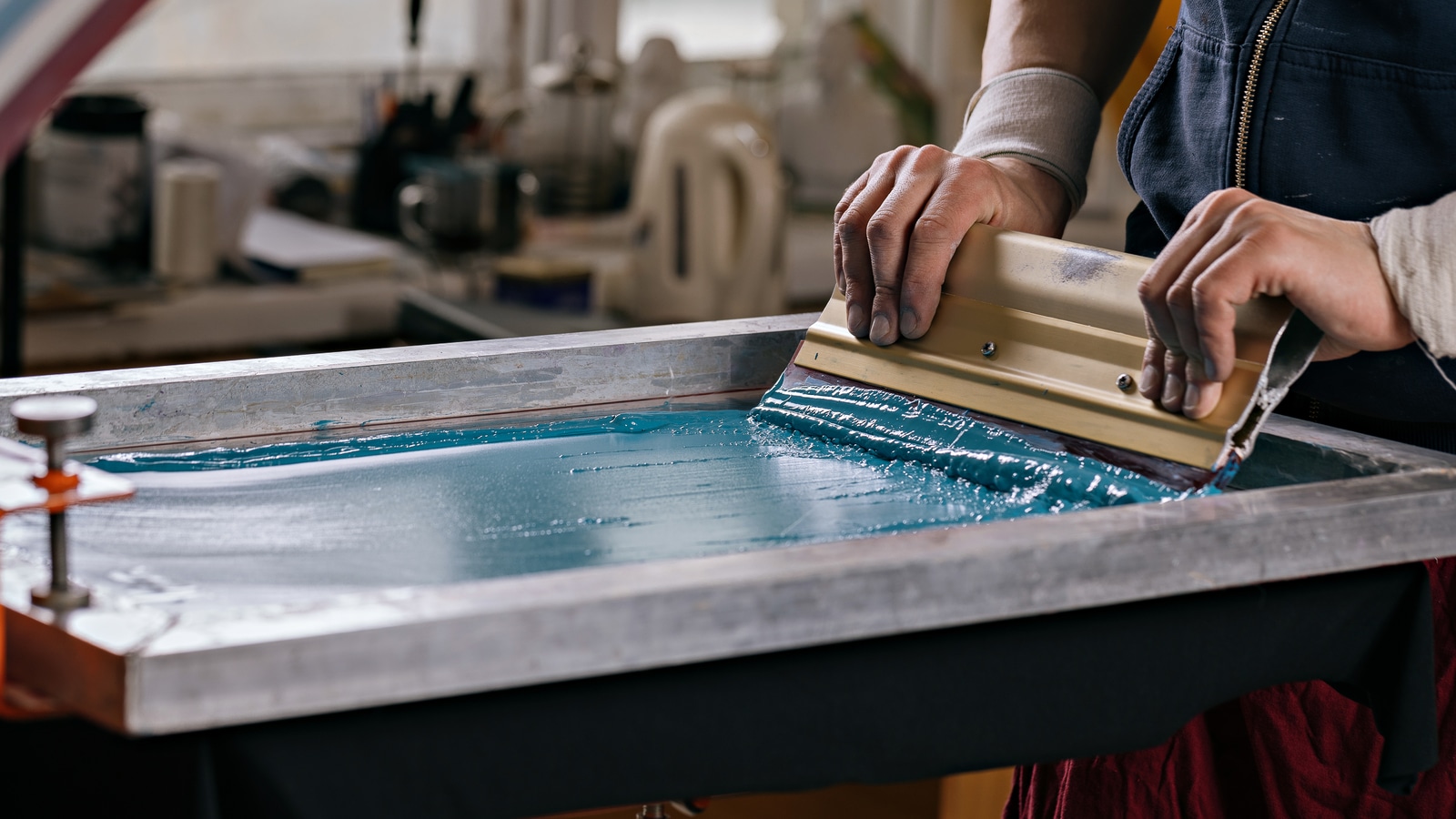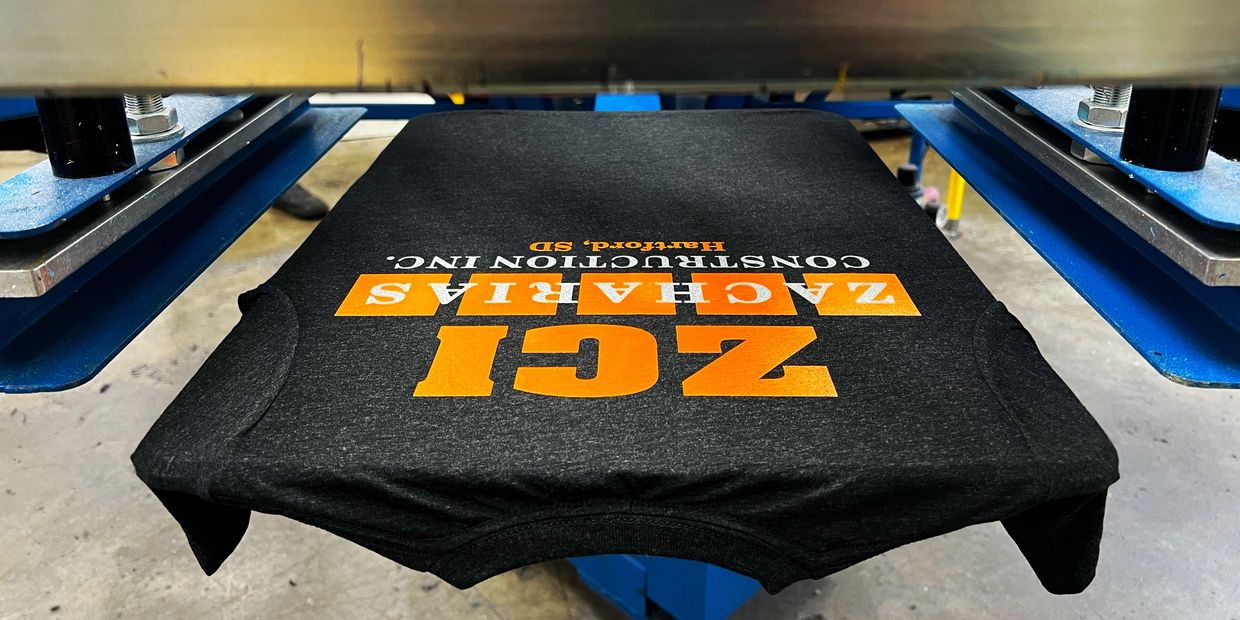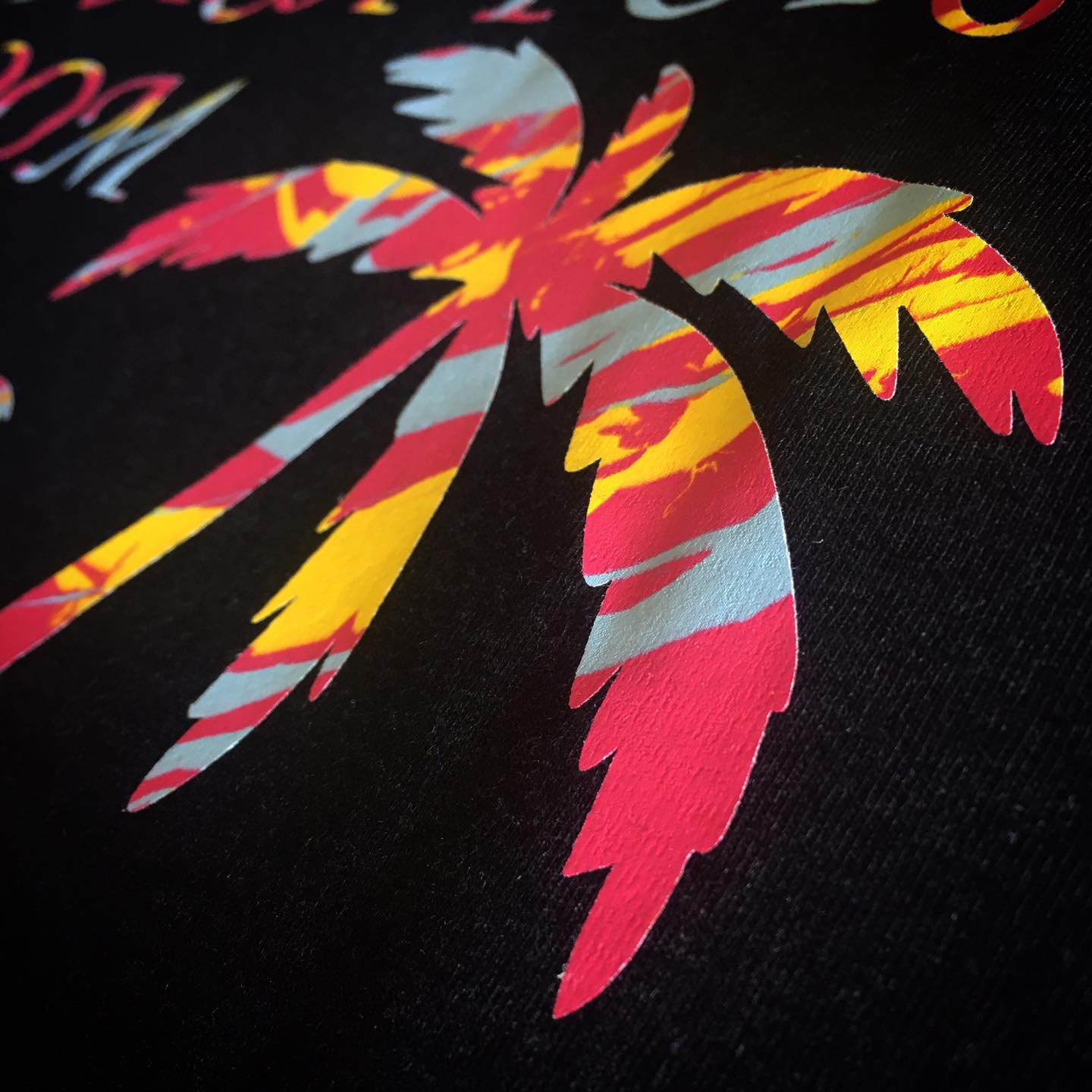High-Volume T-Shirt Printing for Schools and Organizations
Wiki Article
Screen Printing Uncovered: Everything You Required to Learn About Tee Shirt and Garment Printing Techniques
Display printing is a remarkable method that incorporates art with strategy, providing countless possibilities for imagination. Prepared to check out the vital elements that make screen printing an art type?
The Essentials of Display Printing: How It Works
When you plunge right into screen printing, you'll discover it's both an art and a science. At its core, screen printing involves creating a stencil, or screen, that permits ink to pass via only in specific locations.Position the display over the textile, then utilize a squeegee to press ink via the display onto the garment. Each action is important, and grasping them will certainly elevate your screen printing abilities, transforming straightforward garments right into unique, expressive items.
Sorts Of Display Printing Strategies
When you understand the essentials of screen printing, it's time to discover the various techniques that can elevate your designs. One prominent method is standard screen printing, where ink is pressed through a stenciled screen. This strategy is excellent for strong, vivid colors. There's water-based ink printing, which provides a softer feel and is environment-friendly, however it calls for a various method to curing.If you're going for fine details, take into consideration discharge printing. This method removes dye from the textile, leaving a soft, classic appearance. One more option is plastisol printing, recognized for its toughness and brilliant shades, making it a preferred for many brand names. Experiment with halftone printing to develop slope results and complex layouts. Each technique has its special charm, so do not be reluctant to attempt them bent on discover what suits your style best!
Necessary Tools for Screen Printing
To accomplish sensational cause screen printing, having the right devices is fundamental. You'll require a durable display printing framework, which holds the mesh that moves your layout onto the garment. Next, invest in top notch squeegees; these are important for applying ink equally throughout the display. You'll likewise call for a great exposure device to create your displays, along with a washout cubicle for cleaning them after use. A dependable warm resource, like a conveyor clothes dryer or warm press, is important for treating your prints to ensure durability. Don't forget an appropriate work space, geared up with tables and storage for your products. Lastly, safety gear, such as masks and gloves, will certainly keep you secure from chemicals and inks. With the right devices, you'll be well on your means to generating professional-quality prints.Selecting the Right Inks and Products
When picking inks and products for display printing, you need to take into consideration the sort of ink that functions ideal for your job. Consider material compatibility to assure your styles look terrific and last long. Discover environmentally friendly ink options to make your printing process much more sustainable.Kinds Of Display Inks
Choosing the right display ink is vital for accomplishing vivid, sturdy prints that meet your task's requirements. There are numerous types of display inks to check out. Specialty inks, such as metallic or glow-in-the-dark, can include distinct results to your styles.
Fabric Compatibility Factors To Consider
Comprehending fabric compatibility is vital for accomplishing top quality screen prints, especially considering that different materials react distinctively to different inks. Always test your inks on sample material to guarantee they stick appropriately and preserve shade stability. Additionally, maintain in mind that textile weight and appearance can affect the last outcome, so picking the appropriate ink and product combination is crucial for your task's success.Eco-Friendly Ink Options
Eco-friendly inks are ending up being a prominent selection for display printers that desire to decrease their ecological impact while maintaining high quality. When selecting inks, take into consideration water-based inks, which are less dangerous and simpler to cleanse up compared to typical solvents. These inks bond well with textiles, providing vibrant results without poisonous chemicals. You might likewise check out eco-solvent inks that make use of fewer volatile organic compounds (VOCs), making them a much safer option for both your wellness and the planet.Furthermore, seek inks made from renewable energies, such as soy or vegetable-based options. By choosing the best inks and products, you'll not only create spectacular styles yet likewise add to a more lasting printing procedure. Make the button, and your prints will show your commitment to the atmosphere!
Preparing Your Style for Screen Printing

Submit Style Demands
To assure your design looks vibrant and sharp on material, you'll require to pay attention to file layout requirements for display printing. Beginning with vector documents like AI or EPS, as they can be scaled without shedding top quality. If you utilize raster pictures, opt for high-resolution files, such as TIFF or PNG, ideally at 300 DPI. Stay clear of making use of JPEGs, as they can shed clearness when resized. Also, ensure your layout has a clear history to prevent undesirable white sides on your prints. Lastly, keep shade settings in mind; CMYK is common for screen printing, so convert your RGB creates accordingly. By complying with these standards, you'll set your art work up for a successful print.Color Splitting Up Methods
Shade separation is a necessary step in preparing your design for screen printing, and understanding it can substantially enhance your print quality. You'll need to damage your design right into specific colors, as each color requires a separate display throughout printing. This precision not only ensures accurate color representation but additionally streamlines the printing procedure.Resolution and Dimension
Attaining the most effective lead to display printing starts with ensuring your design has the ideal resolution and dimension. Preferably, your art work should be at least 300 DPI (dots per inch) for sharp, clear prints. Your final product may look unprofessional and pixelated. if you use lower resolution.When it comes to size, consider the dimensions of your print location. Layout your art work to match the final print size, ideally developing it in the real dimensions you'll be publishing. This means, you'll avoid any kind of unanticipated scaling concerns.
Constantly check your layout in both vector and raster styles. Vector graphics can be scaled without losing top quality, making them optimal for screen printing. Preparing properly will assure your layout looks impressive on every garment!
Step-by-Step Display Printing Refine
Display printing is a dynamic process that permits you to create lively layouts on different surface areas. To start, you'll need a screen, solution, and your chosen ink. Prepare your screen by cleansing it completely. Next, use the solution equally and allow it completely dry in a dark area. As soon as completely dry, expose your screen to light with your design put on it, which will harden the solution where the light hits, creating a pattern - screen printing kit.After rinsing the unexposed emulsion, your screen is all set. Establish it up on your printing surface area and straighten your garment underneath it. Pour ink onto the display and use a squeegee to press the ink with the stencil onto the material. Lift the screen very carefully and allow the print dry. Cure the ink utilizing heat to guarantee toughness. That's it! You've effectively display published your design.
Tips for Effective Screen Printing Projects
While you're diving right into your display printing tasks, bear in mind that preparation is crucial to success. Start by collecting all your materials-- inks, garments, screens, and squeegees. A clean workspace assists stop unwanted errors, so clean up prior to you start.Next, validate your artwork is high-resolution and correctly sized for your garment. Test your display for correct exposure and tidy it completely to avoid spots. When mixing your inks, follow the manufacturer's guidelines to attain the right screen printing kit consistency.
During printing, use even pressure with your squeegee for constant outcomes. Do not rush; take your time to validate each print satisfies your criteria. After printing, let your garments dry entirely before handling or packaging them.
Lastly, always keep a sample of your help future referral. This way, you can assess your progress and improve your strategies gradually. Delighted printing!

Frequently Asked Inquiries
How Lengthy Does It Take to Establish a Display Printing Work?
Establishing a display printing task normally takes around 30 mins to an hour. You'll prepare the screens, mix inks, and change journalism. The moment differs based on complexity and experience, so remain arranged!Can I Print on Different Material Types Using the Very Same Strategy?
Yes, you can publish on various textile kinds utilizing the very same strategy, yet you'll require to adjust your settings and inks. Some materials absorb ink in different ways, so experimenting assurances the very best results for each and every material.What Are Typical Errors to Stay Clear Of in Screen Printing?
When screen printing, prevent common mistakes like making use of the wrong ink, neglecting correct exposure times, or missing pre-press checks. Always examine your configuration and maintain tidy screens to assure quality outcomes each time.How Can I Effectively Clean and Keep My Screen Printing Tools?
To correctly tidy and preserve your screen printing devices, you should frequently wash displays with ideal solvents, inspect squeegees for wear, and assure all tools are stored dust-free and dry. Uniformity improves and prevents costly repairs efficiency.Is Display Printing Eco Pleasant Compared to Various Other Techniques?
Screen printing can be more eco-friendly than other approaches, especially if you make use of eco-conscious products and water-based inks. By choosing lasting materials and techniques, you decrease waste and minimize your influence on the world.Screen Printing Uncovered: Every Little Thing You Need to Know Concerning T-Shirt and Garment Printing Strategies
At its core, display printing includes creating a pattern, or screen, that allows ink to pass through only in particular locations. Position the screen over the material, then utilize a squeegee to press ink with the display onto the garment. One prominent approach is typical display printing, where ink is pressed through a stenciled screen.When choosing inks and materials for screen printing, you require to take right into account the kind of ink that functions best for your job.
Report this wiki page